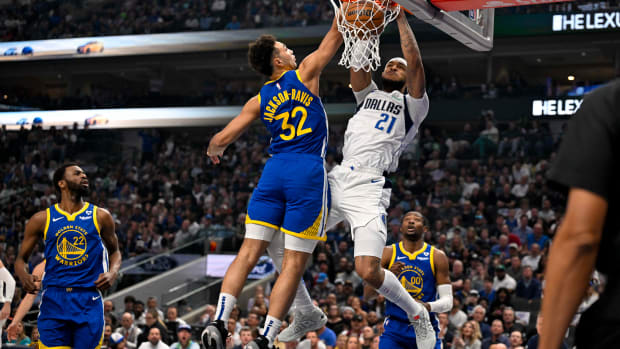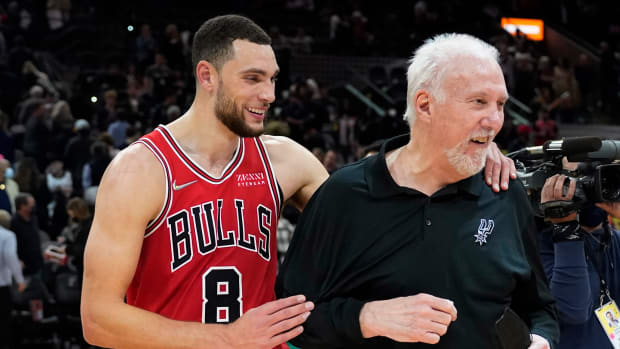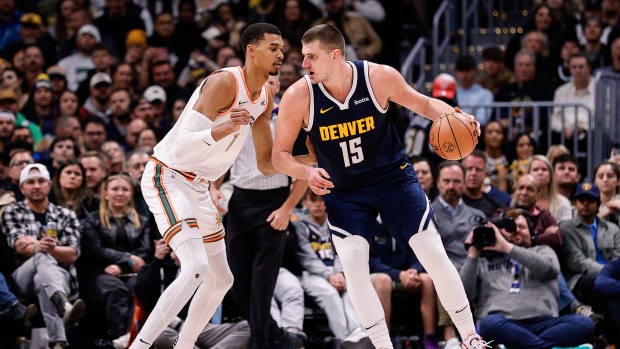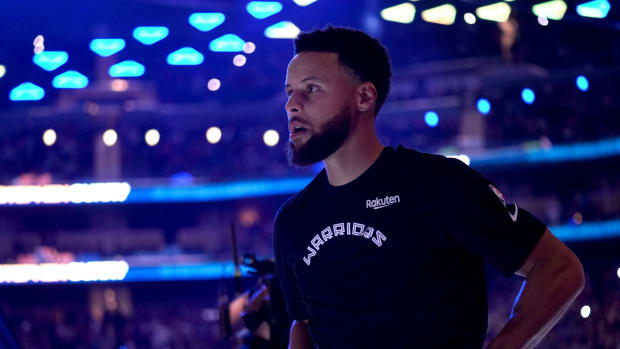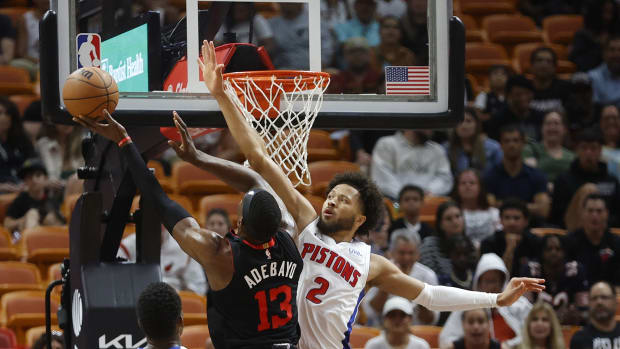Doc Rivers' family reunion creates more problems than it solves
A basketball-coaching father orchestrating a trade for his son isn’t an inherently bad idea. It’s good for a laugh and is bound to produce charges of nepotism, but the concept isn’t necessarily flawed. That's because an NBA player has never previously taken the court for his father’s team. Doc Rivers and the Clippers shouldn’t feel the need to justify their trade for Austin Rivers -- theoretically speaking -- because family ties are everywhere in the NBA. In a league with plenty of second-generation players, siblings and even twins on its rosters, a father/son duo was bound to form at some point.
But granting the possibility that a father/son pairing could work in the NBA, like it has before at the college levels, isn’t the same thing as co-signing this particular move. Doc Rivers shouldn’t be subjected to a higher standard here, but he also shouldn’t expect to receive greater license because he surely knows Austin’s game better than the other 29 team presidents and coaches. This trade should be subjected to the same level of critique as any other.
With that context in place, this deal looks like an ill-advised move for the Clippers. Indeed, the most logical part of this trade -- perhaps the only logical part of it -- is that Austin Rivers is Doc Rivers’ son. If Austin Rivers were some other random player (Say, “Austin Lakes”), the consensus response would be, “What are the Clippers doing?”
SI's 2015 NBA All-Star Game starters
in Memphis.
The central predicament for Austin, who was taken No. 10 overall in the 2012 draft after spending one season at Duke, is that he has yet to develop an NBA identity. As a highly touted prep star, Austin looked like he would develop into a score-first combo guard who could create a shot off the dribble, get to the free-throw line and knockdown the three ball. So far, during 165 games over two-plus seasons with the Pelicans, Austin hasn’t really made a mark in any of those projected skill areas. His shooting numbers are poor (38.7 FG%, 28 3P%), he’s improved as a finisher (47.9 FG% in the basket area) but he’s still got a long way to go to be considered a credible threat, and he’s never come close to posting a league-average Player Efficiency Rating of 15.
Importantly, Austin also hasn’t found other ways -- defense, offense-initiation, playmaking for others -- to contribute. A list of Austin’s comparable players this season includes the likes of Gary Neal (a gunner who can’t make his shots this season), Dion Waiters (a cast-off in Cleveland), Nik Stauskas (a 2014 lottery pick who is reportedly on the block already), and Vince Carter (a Hall of Fame candidate who may or may not have fallen off the productivity cliff at age 37). That’s not exactly elite company. What’s more, the Pelicans, a lottery team throughout Austin’s tenure, have generally been better with him on the bench rather than on the court.
- 2012-13: 100.9 Offensive Rating, 107.7 Defensive Rating, -6.8 Net Rating
- 2013-14: 107 Offensive Rating, 106.6 Defensive Rating, +0.4 Net Rating
- 2014-15: 103.3 Offensive Rating, 106.5 Defensive Rating, -3.1 Net Rating
New Orleans decided against picking up his fourth-year rookie option last fall, allowing him to become an unrestricted free agent in July and signaling to the rest of the league it wasn't exactly expecting a breakout season this year. Ultimately, the Pelicans acquired very little for their 22-year-old former lottery pick, receiving Quincy Pondexter (and his guaranteed contract that runs through 2017-18) plus a 2015 second-round pick in the Green deal.
To be clear, Austin isn’t the only 2012 lottery pick to struggle to find his footing: Thomas Robinson (No. 5) has already played for three teams and also didn’t receive his fourth-year option, Waiters (No. 4) was recently traded by Cleveland to Oklahoma City, and Kendall Marshall (No. 13) has also played for three teams.
Those three cases present an interesting contrast to Austin’s situation, however, because the teams angling to provide a “second chance” (or even the third chance) took their fliers with minimal impact. The Rockets briefly acquired Robinson as an asset play before landing Dwight Howard in 2013. They then flipped Robinson to the Blazers, who didn’t part with any roster players to add him to their bench. The Lakers and the Bucks were able to claim Marshall off waivers after he was a throw-in piece to a 2013 trade involving the Suns and Wizards. In need of a bench scoring boost, the Thunder cashed in a late first-round pick and the undrafted Lance Thomas (out of the rotation after Kevin Durant’s return) to spin the Waiters wheel.
The Man Behind The Swag: Nick Young
The lesson here is clear: acquiring an underperforming lottery pick need not be an expensive endeavor. And yet Doc Rivers parted with three players to acquire Austin, gutting his depth at his weakest position (small forward) and sacrificing his primary positional back-up for All-Star point guard Chris Paul. What’s more, he made those roster moves to acquire Austin, whose best-case scenario for this season is as a poor man’s Jamal Crawford, when he already has the real Jamal Crawford. Austin isn’t yet a trustworthy option at point guard and pairing him with Crawford seems about as redundant as it gets.
Unlike the teams mentioned above, the Clippers have now put themselves into a position where their acquisition of Austin must be a prelude to other moves. L.A., already coping with a weak bench, now finds itself needing more bodies on the wing and, sooner or later, a real back-up for Paul. Are the Clippers hoping that Austin might make Crawford, a legit trade chip for a team in desperate need of chips, slightly more expendable? Maybe? Taking a flier on a career back-up with major question marks just shouldn’t require this many subsequent actions and raise this many questions.
Doc’s tenure in L.A. has produced lots of churn on the roster’s margins with precious little to show for it. This trade only accelerates that chop, and it comes at the cost of multiple other assets, most regrettably the seldom-used Bullock. A full assessment of Doc’s latest round of tinkering won’t be possible until after the trade deadline, but the snap-take feel is that this move could easily create more problems than it solves. Those questions stem not from Doc’s decision to “trade for his son,” but from his decision to shake up his locker room by sacrificing depth to complete a deal that brings him such a questionable talent in return.






























